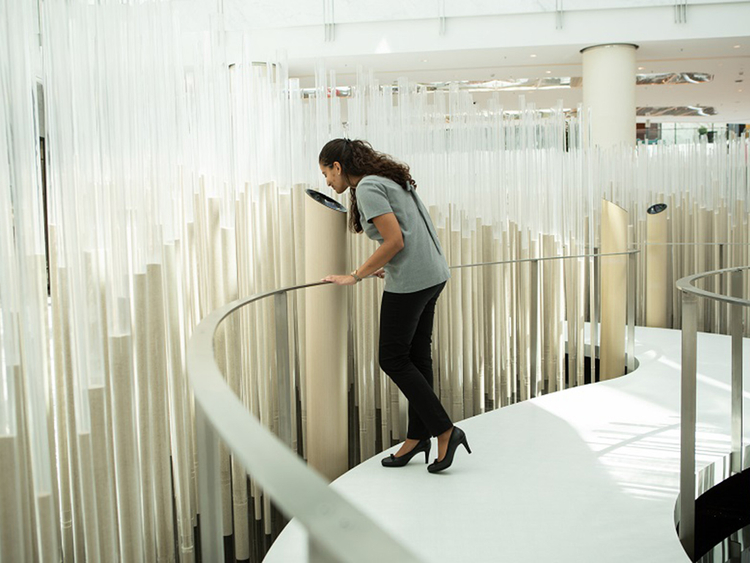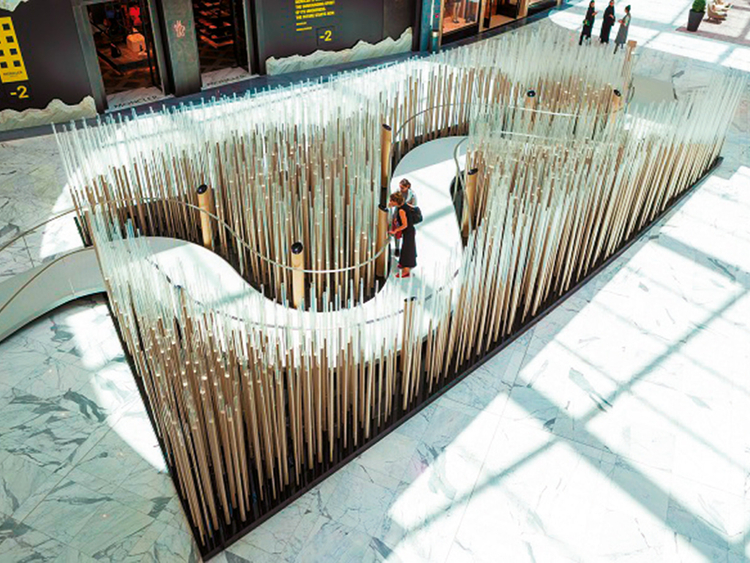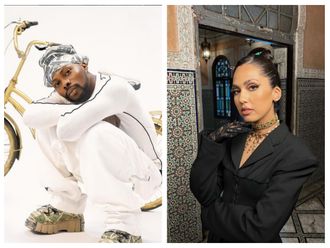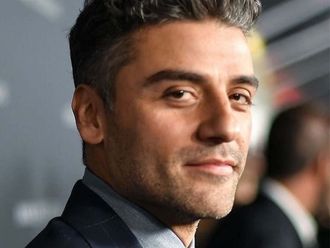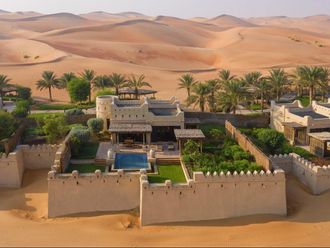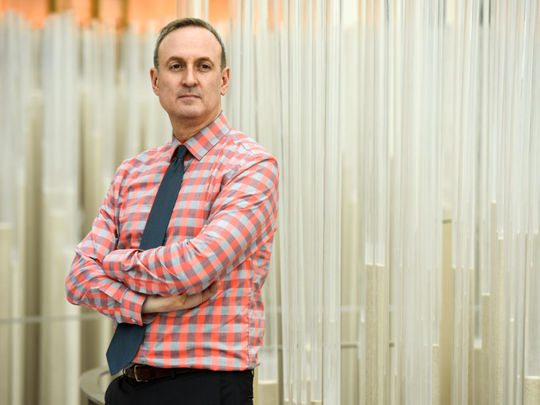
With a background in international economics and Japanese political economy, world renowned scent critic Chandler Burr’s understanding of perfume includes intricate molecular movements and fragments of the nature that bring together the world’s most famous scents.
A journalist and author of the highly acclaimed book The Emperor of Scent, Burr was the first scent critic at the New York Times.
In collaboration with Perfumery & Co and Art Emaar, Burr has curated and designed the Art of Scent Exhibition to mark the launch of Perfumery & Co in The Dubai Mall.
Exploring fragrances from around the globe with creations by Thierry Wasser, Christophe Laudamiel, and Patricia de Nicolai, Burr has hand-picked 11 works of scent art from collections in Perfumery & Co and exhibited them through a pathway amidst elongated sand tubes.
“My visual idea was to contextualise this in the form of a journey. Because of all the years I lived in Japan, the bridges and the pathways inspired me to have a route. In collaboration with the team at Art Emaar, we decided to showcase it in the form of a desert in the UAE,” says Burr.
“Inspired by the Japanese architecture, the level of sand in the tubes signify the rise and fall of the dunes we see in the desert. We wanted [visitors] to be able to see through and sense it as a forest, except it’s contextualised in the desert,” added Burr.
SCENT AS AN ART
“Making scent an art and understanding the scent materials are a major art medium,” Burr explains.
For an individual who’s been in the unusual profession for the longest time, Burr’s understanding of scents and aroma are exemplary, even sometimes to which our brain may not fathom.
“Scent is a very clear art medium. It’s a medium that has aesthetics and design structure; it demands of the artist exactly the same thing that the other mediums of art [do] such as painting, music and writing.”
If you think being a scent critic is merely a cake-walk, you’ve got it wrong. According to Burr, in order to be a critic of visual art it’s important to learn about the aesthetics and execution of the particular medium.
“You can learn about what came before, and what is here today, and what might arise in the future. I think it is very important to remember, every single work of art is conversation with every single work of art — those in the past, or in other mediums or styles. Everything is building from what was there, arguing against it, arguing for it.”
Looking back at his stint as the sole scent critic with the New York Times, Burr emphasises on how he sought out to change the writing style on perfumes.
“The NYT said they wanted me write for them because [they] never had anybody who wrote seriously about perfumes. This art medium is absolutely extraordinary. I said to the Times ‘I will work for you and I’m happy to do it in this medium, but you have to support me.’ Because nobody is used to having someone critique perfumes. Reviews on perfumes are hand-in-glove to a degree, and I didn’t want that. I focused on whether a perfume is aesthetically interesting, does the artist show mastery of the medium and give us something new, and whether it elicits an emotion from you. These are the works of scent.”
CURATING ‘THE ART OF SCENT’
Burr’s past work also includes a scent exhibition curated by him at the Museum of Arts and Design, which chose 12 artists’ scents from 1889 to 2012, each representing various concepts of romanticism, modernism and realism.
On being approached by Perfumery & Co to curate a similar exhibition, he desired to merge the essence of Middle Eastern culture and contemporary art.
“I went through the brands and chose 11 works, which I thought were of particular interest. I focused on the aesthetics and the design which spoke differently about the scent. I chose some because they are truly, deeply representative of local perfumes. There are three brands from the Middle East which are very unusual from the regions scent culture. These 11 are also works of realism, surrealism, and minimalism,” Burr says.
In the eyes of Burr, each of the 11 perfumes is just as important as the other. “There’s none that is more important, by definition. As a lover of art I may have a favourite but as a curator we don’t choose. In this exhibition it’s not about what I like or don’t like. It’s only about what I think is aesthetically important, finding a work that is structurally so well done and whose design stands out interestingly,” says Burr.
While the industry may have rapidly grown commercially, the concept of critiquing perfumes is still on the path of developing.
“I think that we [perfume industry] are just beginning as compared to any other art. Photography took about 50 years to make it to museums and galleries, I think scent [as an art] is maybe in the first year of 50 years. Understanding that this is truly works of art, I don’t think it’s going to take 50 years. In the next two decades we are going to understand that works of art created in scent are exactly the equal of their brothers and sisters made in all the other mediums.”
___
The details
What: The Art of Scent Exhibition
Where: Fashion Avenue, The Dubai Mall
When: Until July 12
Time: Mall operational hours
— Simran Kanal is an intern at Gulf News.


